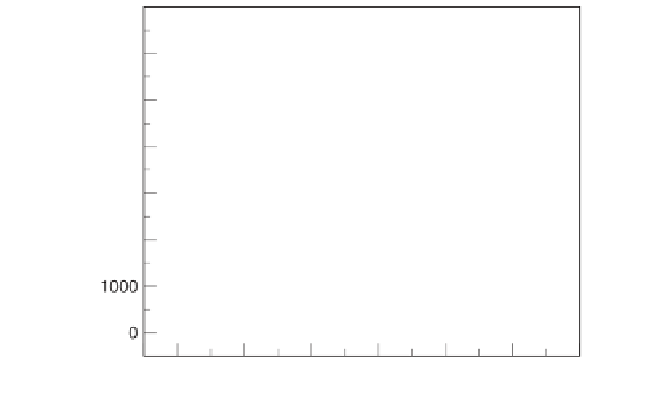Biology Reference
In-Depth Information
Figure 4.14
Median signal intensity plotted as a function of known “spike-in”
concentration for publicly available Affymetrix spike-in data (see text). Data
points were calculated using Affymetrix Microarray Suite v. 5.0. Squares are
median values resultant from fitting data from 12 reliable genes (i.e., all genes
except 407_at and 36889_at) at each concentration between 0 and 1024 pM.
Dashed line is fit of data to the Langmuir isotherm function [eq. (6)] and solid
line is linear fit through the origin of the data between 1 pM and 64 pM.
in figure 4.14. The upper limit (100 pM) represents the approximate
upper limit for which a linear correlation between measured signal
level and known (spike-in) concentration is observed. Data below 1 pM
was excluded because it contains a significant nonlinear component,
presumably due to nonspecific binding. Note that including this
low-concentration data does not significantly affect the result. The
black line in figure 4.14 is of the form
I
35
c
, where
I
is the observed
intensity and
c
is the spike-in concentration in pM. Finally, it is neces-
sary to convert the spike-in concentrations to tpm. To do this, it is
necessary to know the ratio of the number of spike-in transcripts to
the number of transcripts in the background mRNA. This ratio is not
available for the specific spike-in data set under consideration. One
method of dealing with this is to make the assumption that this ratio
is comparable to that reported in earlier spike-in experiments [5]; that
is, assume that a spike-in concentration of 1 pM corresponds to a
transcript frequency of 1:150,000, or 6.7 tpm. From this assumption
follows the approximation that, for spike-in values below approxi-
mately 100 pM, each 5.25 units of observed intensity (in the MAS
=
















Search WWH ::

Custom Search